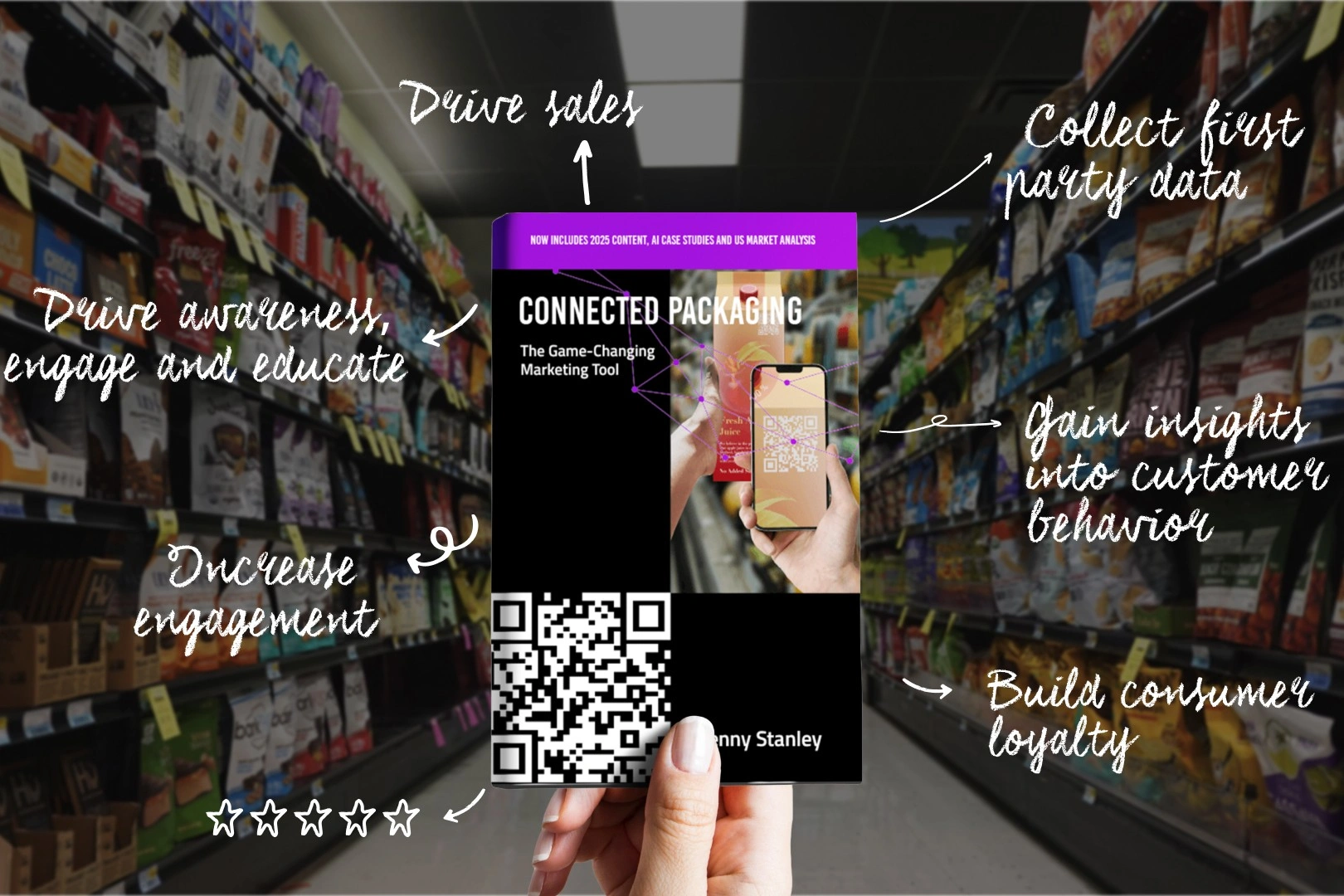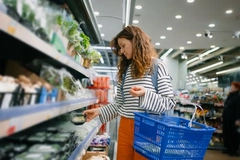Appetite Creative director unpacks how EPR and QR codes reshape connective packaging strategies
Key takeaways
- US packaging regulations like EPR, DSCSA, and FSMA are transforming compliance into a strategic marketing opportunity.
- European brands lead in data privacy and sustainability messaging, while US brands excel in data-driven engagement and faster adoption of smart packaging.
- With the GS1 2027 barcode-to-QR deadline approaching, brands that act early gain a competitive edge in consumer engagement, data collection, and supply chain optimization.
Jenny Stanley, managing director at the UK-based creative technology studio Appetite Creative, has released an updated edition of her book “Connected Packaging: The Game-Changing Marketing Tool.”
The updates include a chapter on the ongoing regulatory changes in the US, including the California Consumer Privacy Act and the upcoming GS1-powered QR code.
Packaging Insights sits down with Stanley to discuss the most significant recent regulatory developments in connected packaging.
What propelled you to describe the US regulatory landscape as “transformative” in your book update?
Stanley: In the US, regulations are creating economic incentives rather than just compliance burdens. The EPR in California, New York, Maine, and Colorado have all implemented frameworks that essentially say: “If you can prove your packaging is recyclable and educate consumers on proper disposal, you pay lower fees.”
Connected packaging becomes the mechanism to demonstrate that proof. A QR code can provide location-specific recycling instructions, track consumer behavior, and generate the data needed for EPR reporting, all while engaging consumers.
The Drug Supply Chain Security Act (DSCSA) took a different approach. DSCSA mandated pharmaceutical traceability for safety, but smart brands realized the same serialized codes required for compliance could also support patient adherence programs, adverse event reporting, and direct consumer education. What started as a regulatory requirement became a competitive advantage.
 The updated edition of the book “Connected Packaging: The Game-Changing Marketing Tool” (Image credit: Appetite Creative).The Food Safety Modernization Act’s enhanced traceability requirements are having similar effects on the F&B industry. Brands need documentation of “critical tracking events” anyway. Why not use the same infrastructure to tell sustainability stories, verify organic claims, and build consumer trust?
The updated edition of the book “Connected Packaging: The Game-Changing Marketing Tool” (Image credit: Appetite Creative).The Food Safety Modernization Act’s enhanced traceability requirements are having similar effects on the F&B industry. Brands need documentation of “critical tracking events” anyway. Why not use the same infrastructure to tell sustainability stories, verify organic claims, and build consumer trust?
The US approach is essentially turning compliance requirements into marketing opportunities. EU regulations like Digital Product Passports follow similar logic, but US brands have the advantage of seeing what worked in Europe and implementing more efficiently.
How do US packaging brands’ regulatory preparedness and transparency compare to European brands?
Stanley: European brands had a head start with the General Data Protection Regulation, and are generally more prepared for data privacy requirements. They’ve been navigating complex multijurisdictional regulations for years, so adding connected packaging to their compliance framework feels like evolution, not revolution.
However, US brands are catching up rapidly and, in some cases, leapfrogging European approaches. US brands tend to be more comfortable with data-driven marketing and have been quicker to see connected packaging’s commercial potential beyond compliance.
European brands often lead with sustainability messaging. US brands lead with consumer engagement and loyalty programs.
The most sophisticated brands, regardless of geography, are those treating connected packaging as strategic infrastructure rather than a marketing campaign. They’re building platforms that serve multiple purposes: compliance documentation, supply chain optimisation, consumer engagement, and sustainability communication, all through the same QR code.
The biggest gap is not geographic but organizational. Brands with cross-functional teams where marketing, supply chain, legal, and sustainability work together on connected packaging strategy are succeeding. Those treating it as solely a marketing initiative or purely a compliance requirement are struggling.
Interestingly, US pharmaceutical companies lead globally in connected packaging sophistication because DSCSA forced early adoption. They have had years to refine their approaches, and other industries are now learning from their implementations.
With GS1’s 2027 barcode-to-QR code deadline approaching, what are the biggest challenges and opportunities for brands?
Stanley: The biggest challenge is that many brands still think they have time. They don’t. Yes, 2027 is the target for point-of-sale systems to be capable of scanning 2D codes. But if you’re a major brand distributing through retailers like Tesco, who are piloting now, you need packaging ready for production in 2026 at the latest. That means finalizing designs, testing print quality, integrating with your supply chain systems, and training your organization, all of which takes 12–18 months minimum.
The second challenge is that brands view this as a packaging change when it’s actually an organizational transformation. You need marketing, supply chain, IT, legal, and operations all aligned. Most companies do not have those cross-functional structures in place.
 US brands have been quicker to see connected packaging’s commercial potential beyond compliance, says Stanley.However, the opportunity is immense. Every brand will eventually need to transition, it’s not optional. But brands that move early get two to three years of competitive advantage while competitors are still planning.
US brands have been quicker to see connected packaging’s commercial potential beyond compliance, says Stanley.However, the opportunity is immense. Every brand will eventually need to transition, it’s not optional. But brands that move early get two to three years of competitive advantage while competitors are still planning.
They will have:
- Established consumer behaviors (customers trained to scan their products)
- Rich first-party data (knowing who buys, where, when, and how they use products)
- Optimized supply chains (years of tracking data, improving operations)
- Proven return on investment (making it easier to justify additional investment).
We’re already seeing this. Brands that implemented connected packaging in 2023–2024 are reporting 30% sales increases, 14% scan rates, and two to three minute engagement times.
By 2027, those metrics will be their baseline while competitors are still figuring out how to generate a QR code.
The brands that treat 2027 as a compliance deadline will do the minimum. The brands that see it as a strategic opportunity are investing now and capturing market share.












